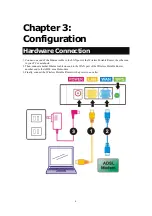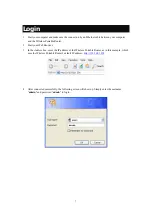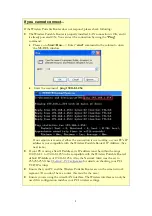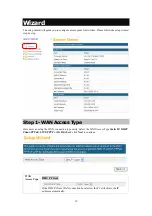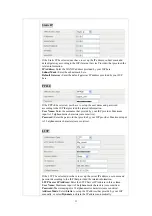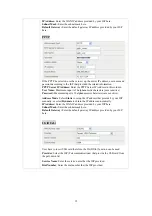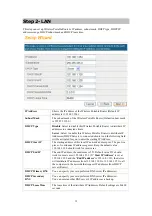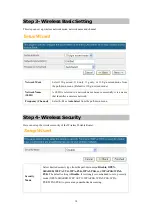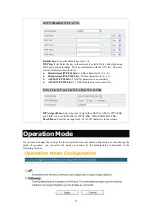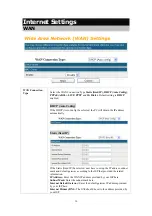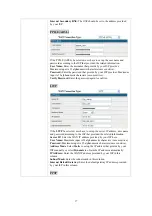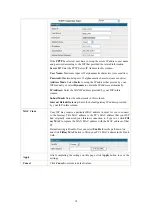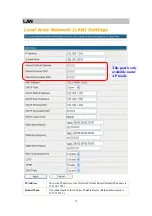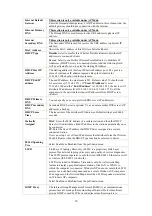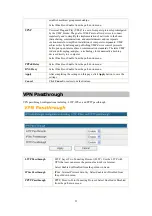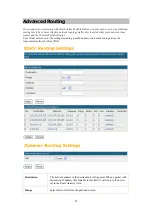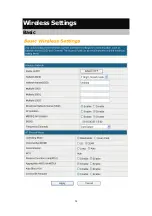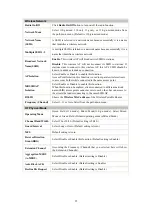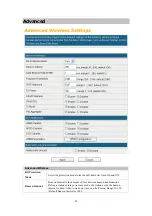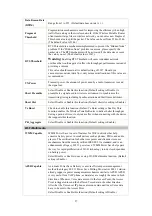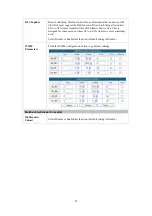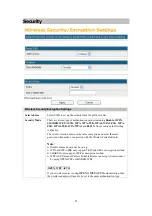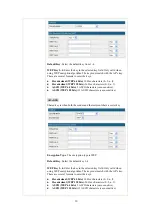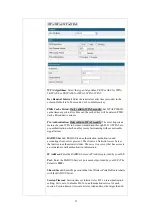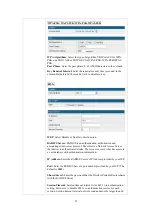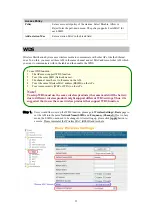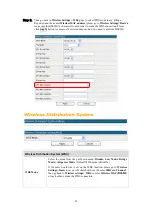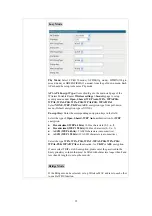
20
Internet Default
Gateway
This section is only available under AP Mode.
Enter the Internet default gateway LAN IP address in this column. And, the
default gateway should has a connection with the Internet.
Internet Primary
DNS
This section is only available under AP Mode.
The Primary DNS is used for resolve the URL address to physical IP
address.
Internet
Secondary DNS
This section is only available under AP Mode.
The Secondary DNS is used for resolve the URL address to physical IP
address.
MAC Address
Shows the MAC address of this Wireless Portable Router.
DHCP Type
Disable
: Select to disable this Wireless Portable Router to distribute IP
addresses to connected clients.
Server
: Select to enable this Wireless Portable Router to distribute IP
Addresses (DHCP Server) to connected clients. And the following field
will be activated for you to enter the starting IP Address.
DHCP Start IP
Address
The starting address of this local IP network address pool. The pool is a
piece of continuous IP address segment. Keep the default value
192.168.1.100 should work for most cases.
DHCP End IP
address
The end IP address, the maximum is 253. Default value 253 should work
for most cases (192.168.1.253.) If “
Start IP Address
” is set at
192.168.1.100 and the “
End IP address
” is 192.168.1.253, the device will
distribute IP addresses from 192.168.1.100 to 192.168.1.253 to all the
computers in the network that request IP addresses from DHCP server
(Router).
DHCP Primary
DNS
You can specify your own preferred DNS server IP address(es).
DHCP Secondary
DNS
Secondary DNS Server is optional. You can enter another DNS server’s IP
address as a backup.
DHCP Lease
Time
The lease time of the distribute IP Addresses. Default settings are 86400
seconds.
Statically
Assigned
MAC
: Enter the MAC address of a certain station, and then the DHCP
Server will to distribute a fixed IP address to the station automatically once
be connected.
IP
: Enter the fixed IP address that DHCP Server assigned to a certain
connected station.
User can set up 3 set of fixed IP addresses that distribute form the Wireless
Portable Router when the DHCP Type function be selected to Server.
802.1d Spanning
Tree
Select Enabled or Disabled from the pull-down menu.
LLTD
Link Layer Topology Discovery (LLTD) is a proprietary Link Layer
protocol for network topology discovery and quality of service diagnostics.
The LLTD protocol operates over both wired (IEEE 802.3 Ethernet) as well
as wireless (IEEE 802.11) networks.
LLTD is included in Windows Vista and is used by its Network Map
feature to display a graphical representation of the LAN or WLAN, to
which the computer is connected. Windows XP does not contain the LLTD
protocol as a standard component and as a result, Windows XP computers
do not appear on the Network Map unless the LLTD responder is installed
on Windows XP computers.
Select Enabled or Disabled from the pull-down menu.
IGMP Proxy
The Internet Group Management Protocol (IGMP) is a communications
protocol used to manage the membership of Internet Protocol multicast
groups. IGMP is used by IP hosts and adjacent multicast routers to

